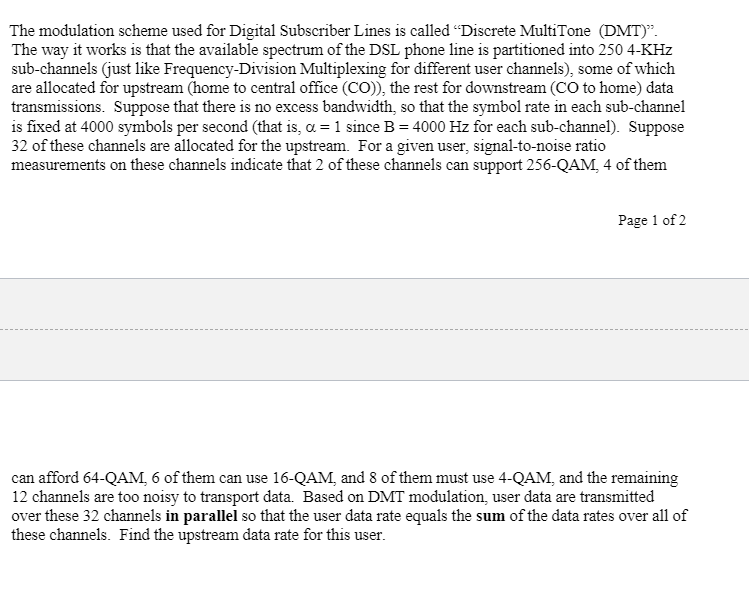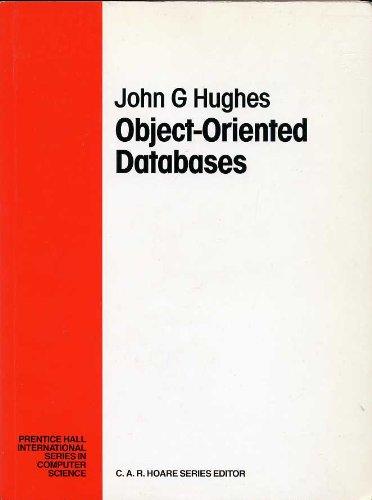
The modulation scheme used for Digital Subscriber Lines is called "Discrete MultiTone (DMT)". The way it works is that the available spectrum of the DSL phone line is partitioned into 250 4-KHz sub-channels (just like Frequency-Division Multiplexing for different user channels), some of which are allocated for upstream (home to central office (CO)), the rest for downstream (CO to home) data transmissions. Suppose that there is no excess bandwidth, so that the symbol rate in each sub-channel is fixed at 4000 symbols per second (that is, a = 1 since B = 4000 Hz for each sub-channel). Suppose 32 of these channels are allocated for the upstream. For a given user, signal-to-noise ratio measurements on these channels indicate that 2 of these channels can support 256-QAM, 4 of them Page 1 of 2 can afford 64-QAM, 6 of them can use 16-QAM, and 8 of them must use 4-QAM, and the remaining 12 channels are too noisy to transport data. Based on DMT modulation, user data are transmitted over these 32 channels in parallel so that the user data rate equals the sum of the data rates over all of these channels. Find the upstream data rate for this user. The modulation scheme used for Digital Subscriber Lines is called "Discrete MultiTone (DMT)". The way it works is that the available spectrum of the DSL phone line is partitioned into 250 4-KHz sub-channels (just like Frequency-Division Multiplexing for different user channels), some of which are allocated for upstream (home to central office (CO)), the rest for downstream (CO to home) data transmissions. Suppose that there is no excess bandwidth, so that the symbol rate in each sub-channel is fixed at 4000 symbols per second (that is, a = 1 since B = 4000 Hz for each sub-channel). Suppose 32 of these channels are allocated for the upstream. For a given user, signal-to-noise ratio measurements on these channels indicate that 2 of these channels can support 256-QAM, 4 of them Page 1 of 2 can afford 64-QAM, 6 of them can use 16-QAM, and 8 of them must use 4-QAM, and the remaining 12 channels are too noisy to transport data. Based on DMT modulation, user data are transmitted over these 32 channels in parallel so that the user data rate equals the sum of the data rates over all of these channels. Find the upstream data rate for this user







